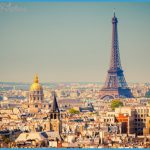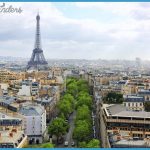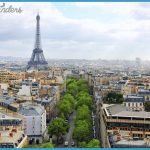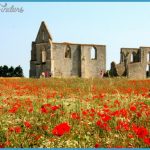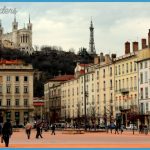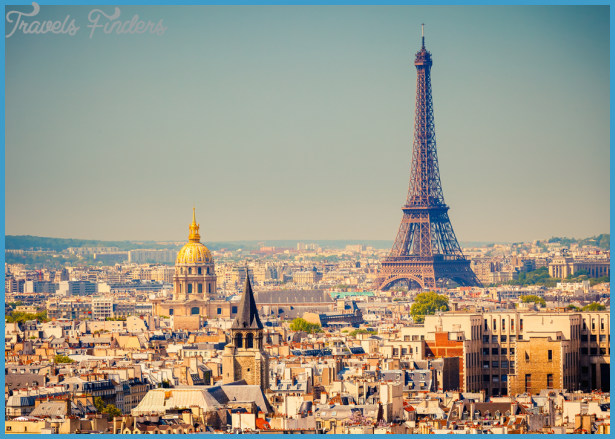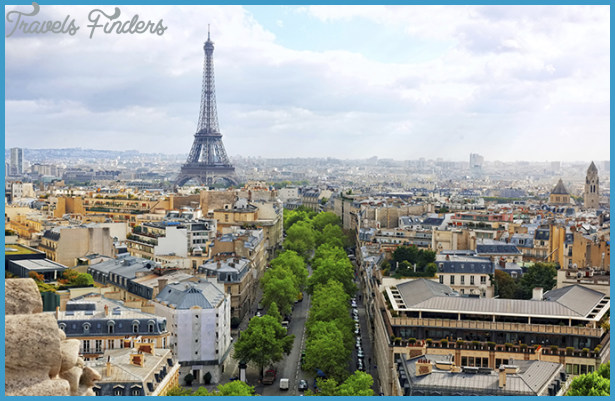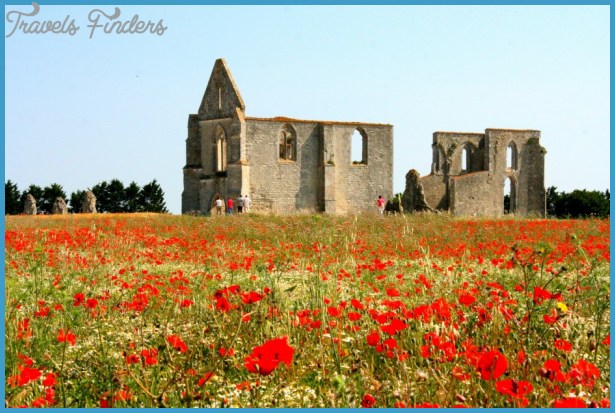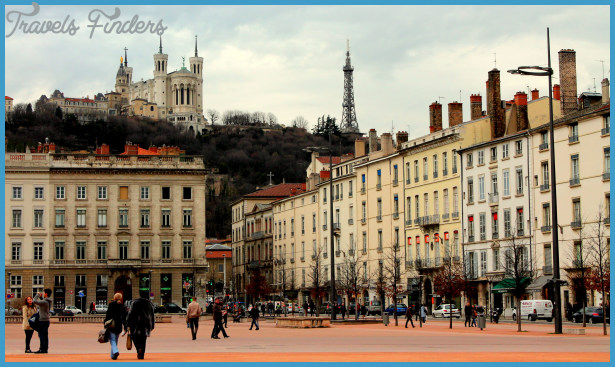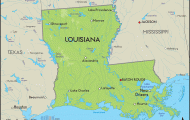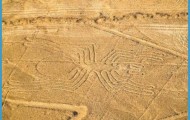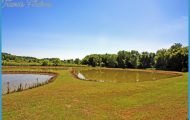Traveling in France
BOULEVARD ST-MICHEL AND ENVIRONS. At the center of the Latin Quarter, bd. St-Michel, which divides the 5eme and 6eme, is filled with cafes, restaurants, bookstores, and clothing boutiques. Place St-Michel, to the north, is packed with students, often engaged in a protest of some sort, and lots of tourists. (M: St-Michel.)
LA SORBONNE. Founded in 1253 by Robert de Sorbon as a dormitory for 16 poor theology students, the Sorbonne is one of Europe’s oldest universities. Visitors can stroll through the Chapelle de la Sorbonne (entrance off of the pi. de la Sorbonne), an impressive space which houses temporary exhibitions on the arts and letters. Nearby place de la Sorbonne, off bd. St-Michel, boasts a flavorful assortment of cafes, bookstores, and during term-time students. (45-7 r. des Ecoies. M: Ciuny-La Sorbonne or RER: Luxembourg. Walk away from the Seine on bd. St-Michel and turn left on r. des Ecoies to see the main building.)
RUE MOUFFETARD. South of pi. de la Contrescarpe, rue Mouffetard plays host to one of the liveliest street markets in Paris, and, along with rue Monge, binds much of the Latin Quarter’s student social life. (M: Cardinal Lemoine or Place Monge.)
JARDIN DU LUXEMBOURG. South along bd. St-Michel, the formal French gardens of the Jardin du Luxembourg are perfect for strolling and reading; they’re also home to the most famous guignol puppet theater. (RER: Luxembourg; main entrance is on bd. St-Michel. Open Apr.-Oct. daily 7:30am-9:30pm; Nov.-Mar. 8:15am-5pm.)
PANTHEON. The crypt of the Pantheon, which occupies the highest point on the Left Bank, houses the tombs of Louis Braille, Victor Hugo, Jean Jaures, Rousseau, Voltaire, and Emile Zola; you can spy each tomb from behind locked gates. The Pantheon also houses Foucault’s Pendulum, which proves the rotation of the earth. (PI. du Pantheon. M: Cardinal Lemoine. From the Metro, walk down r. Cardinal Lemoine and turn right on r. Clovis; walk around to the front of the building to enter. Open daily in summer 10am-6pm; off-season 10am-6pm; last admission 5:15pm. Admission ‚7, students ‚4.50. Under-18 free. Free entrance first Su of every month Oct.-Mar. Guided tours in French leave from inside the main door daily at 2:30 and 4pm.)
MOSQUEE DE PARIS. The Institut MusuLman houses the beautiful Persian gardens, elaborate minaret, and shady porticoes of the Mosquee de Paris, a mosque constructed in 1920 by French architects to honor the role played by the countries of North Africa in WWI. Exhausted travelers can relax in the steam baths at the exquisite hammam (Turkish bath) or sip mint tea at the equally soothing cafe. (M: Jussieu. Behind the Jardin des Plantes at pi. du Puits de I’Ermite. From the metro, walk down r. Daubenton; the mosque is at the end of the street, on the left. s01 4835 78 17. Open June-Aug. daily lOam-noon and 2-6:30pm; Sept-May reduced hours. Guided tour ‚3, students ‚2. Hammam open for men Tu 2-9pm and Su 10am-9pm; women M, W-Th, Sa 10am-9pm and F 2-9pm. ‚15. lOmin. massage ‚10, 30min. massage ‚30. MCV.)
BOULEVARD ST-GERMAIN. Most famous as the ex-literati hangout of Existentialists (who frequented the Cafe de Flore, 306) and Surrealists like Andre Breton (who preferred the Deux Magots), the bd. St-Germain is stuck somewhere in between nostalgia for its intellectual cafe-culture past and an unabashed delight with all things fashionable and cutting edge. (M: St-Germain-des-Pres.)
EGLISE ST-GERMAIN-DES-PRES. Scarred by centuries of weather, revolution, and war, the Eglise St-Germain-des-Pres, begun in 1163, is the oldest standing church in Paris. (3 pi. St-Germain-des-Pres. From the Metro, walk into pi. St-Germain-des-Pres to enter the church from the front. Open daily 8am-8pm. Info office open M 2:30-6:45pm, Tu-Sa 10:30am-noon and 2:30-6:45pm.)
JARDIN DES PLANTES. Opened in 1640 to grow medicinal plants for King Louis XIII, the garden now features science museums, rosaries, and a zoo, which Parisians raided for food during the Prussian siege of 1871. (M: Gare d’Austerlitz or Jussieu, s 01 40 79 37 94. Open daily 7:30am-8pm; off-season 7:30am-5:30pm.)
ODEON. Courdu Commerce St-Andre is one of the most picturesque walking areas in the 6eme, with cobblestone streets, centuries-old cafes (including Le Procope), and outdoor seating. Just to the south of bd. St-Germain-des-Pres, the Carrefour d’Odeon, a favorite Parisian hangout, is a delightful square filled with bistros, cafes, and more outdoor seating. (M: Odeon).
EIFFEL TOWER. Gustave Eiffel, its designer, wrote: France is the only country in the world with a 300m flagpole. Designed in 1889 as the tallest structure in the world, the Eiffel Tower was conceived as a monument to engineering that would surpass the Egyptian pyramids in size and notoriety. Before construction had begun, shockwaves of dismay reverberated through the city. Critics dubbed it a metal asparagus and a Parisian tower of Babel. Writer Guy de Maupassant ate lunch every day at its ground-floor restaurant the only place in Paris, he claimed, from which he couldn’t see the offensive thing. Nevertheless, when it was inaugurated in March 1889 as the centerpiece of the Universal Exposition, the tower earned the love of Paris; nearly 2 million people ascended during the event. Today, as an icon of Paris represented on everything from postcards to neckties and umbrellas, Eiffel’s wonder still takes the heat from some who see it as Maupassant did: An excruciating nightmare overrun with tourists and their trinkets. Don’t believe the anti-hype, though. The tower may not be beautiful, but it is a wonder of design and engineering. (M: Bir-Hakeim or Trocadero. s01 44 11 23 23; www.tour-eiffei.fr. Open daily mid-June through Aug. 9am-midnight; Sept.-Dec. 9:30am-llpm (stairs 9:30am-6pm); Jan. through mid-June 9:30am-llpm (stairs 9:30am-6:30pm). Elevator to 1st fl. ‚3.70; 2nd fl. ‚7; 3rd fl. ‚10.20. Stairs to 1st and 2nd fl. ‚3. Last access to top 30min. before closing.)
INVALIDES. The gold-leaf dome of the Hotel des Invalides shines at the center of the leme. The green, tree-lined Esplanade des Invalides runs from the hotel to the Pont Alexandre III, a bridge with gilded lampposts from which you can catch a great view of the Invalides and the Seine. The Musee de I’Armee, Musee des Plans-Reliefs, and Musee de I’Ordre de la Liberation Eire housed in the Invalides museum complex (see Museums, 319), as is Napoleon’s tomb, in the Eglise St-Louls. Enter from either pi. des Invalides or pi. Vauban and av. de Tourville. To the left of the Tourville entrance, the Jardin de I’lntendant is a shady break from guns and emperors. (M: Invalides, Latour Maubourg, or Varenne.)
LA PAGODE. A pseudo-Japanese pagoda built in 1895 by the Bon Marche department store magnate M. Morin as a gift to his wife, La Pagode is an artifact the 19th-century Orientalist craze in France. When Mme. Morin left her husband just prior to WWI, the building became the scene of Sino-Japanese soirees. In 1931, La Pagode opened its doors to the public, becoming a cinema and cafe where silent screen stars like Gloria Swanson were known to raise a glass. The theater closed during the Nazi occupation, despite its friendliness towards German patrons. It reopened under a private owner in November 2000. (M: St-Frangois-Xavier. 57bis r. de Babylone.)
CHINATOWN. Paris’s Chinatown is bounded by r. de Tolbiac, bd. Massena, av. de Choisy, and av. d’lvry. It is home to large Chinese, Vietnamese, and Cambodian communities, and a host of Asian restaurants and shops. (M: Tolbiac).

